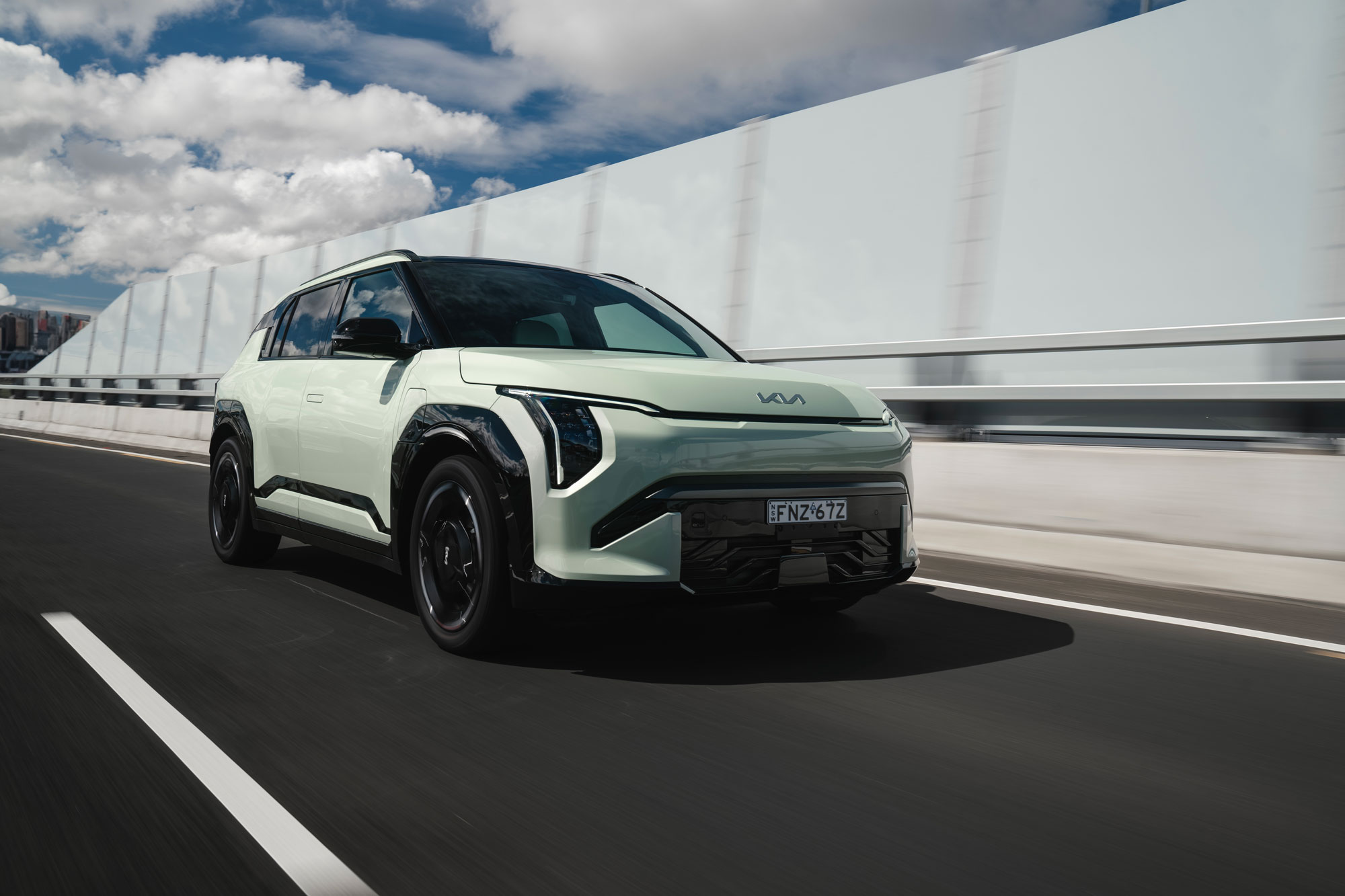Score breakdown
Things we like
- Fantastic looks
- Fun chassis
- Sharp price
Not so much
- 1.6-litre a bit dowdy
- Tyres scrabble
- Axle tramp
The Hyundai i30 Sedan lives because its maker is rightly convinced that not everybody wants an SUV, be it a Kona, Tucson or any of the five million or so alternatives. Part of Hyundai’s strategy with its sedans – i30 and Sonata – is to very deliberately stand out from the crowd, especially in N Line guise.
While the i30 hatchback is a bit meek, the sedan is a knockout. Long, low and looking like the clay model went fencing with Zorro, it’s a striking design that leaves little room for doubt about what you think. Hyundai has also cast its eye over the fence at Kia and noticed that the Cerato GT-Line does quite well for itself. That meant taking the halo N badge, inserting a 1.6-litre turbo and strapping in some chassis mods to create the halfway-house N Line.
Where Kia has ditched the manual, Hyundai opens its three-strong Sedan N Line with the six-speed manual, priced under $31,000 before on-road costs and with a bit more aggro than you might reasonably expect.
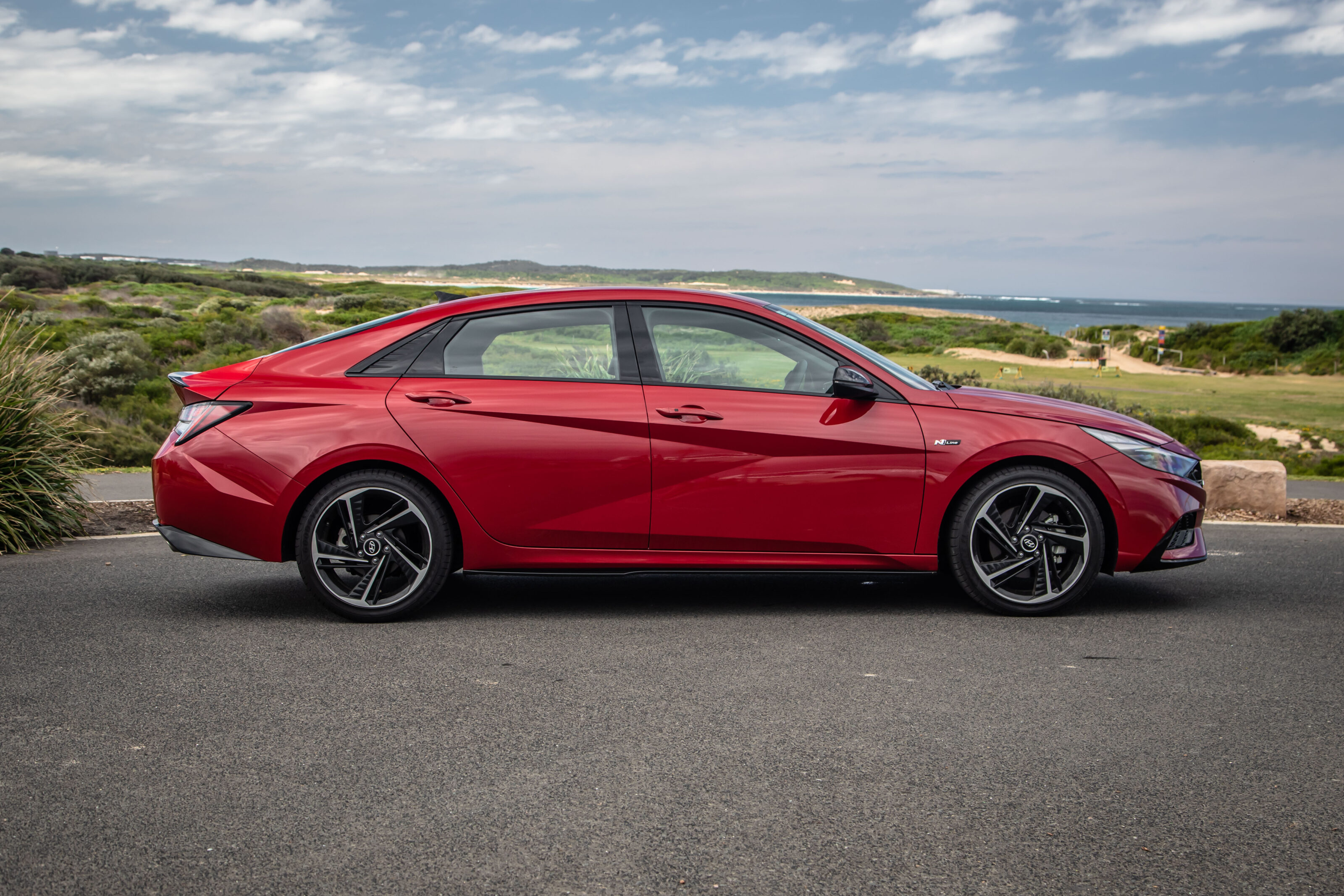
All i30 sedans have six airbags, ABS, stability and traction controls, forward AEB (high and low speed), with pedestrian and cyclist detection to 85km/h, lane-keep and lane following assist, blind-spot collision avoidance and reverse cross-traffic alert. The manual misses out on some bits and pieces like active cruise control and reverse AEB, but neither of those work in a manual without things going wrong. The kids get two ISOFIX and three top-tether anchors.
The i30 Sedan does not have and will likely not get an ANCAP rating but for what it’s worth, since the model’s local launch toward the end of 2020, the US IIHS crash test yielded a Top Safety Pick rating.
Not only does the N Line designation ditch the atmo 2.0-litre of the standard car, it adds yet more visual aggro to the exterior in the form of the bigger wheels, blacked-out faux diffuser, front grille and lip spoiler, more exhaust tips and black skirts running along the side of the car. Luc Donckerwolke’s creased and slashed design is pretty wild out of the box and the N Line additions help rather than hinder.
While the i30 hatchback is a bit meek, the sedan is a knockout. Long, low and looking like the clay model went fencing with Zorro.
Comfort and space

Being built on a completely different platform to the i30 hatch, the sedan has a completely different interior. The driver sits in a cockpit focussed on them, with a grab handle sweeping up out of the centre console (reminiscent, I think of, the Lexus LC500’s) and into the dash itself. It’s a bit grey in here though and you can see the joins where various trim sections meet. A bit disappointing but hardly a deal-breaker.
Under the climate controls, you’ll find a space to charge your phone, with wireless charging as well as two USB ports and one of those ugly 12V plugs. The touchscreen is surrounded by piano black plastic and butts into the dash surround. The dash itself features a large central speedo, a tacho to the left and a digital screen to the right. I’m not entirely convinced by it, but it works. The big improvement over the standard sedans is the N wheel, replacing the dorky-looking two-spoke wheels everyone is suddenly doing again.

The front seats look brilliant with their N badges embossed in the fake leather, along with red stitching and substantial side bolsters. Very sporty. And there’s a proper handbrake, too. You also get two cup holders and a console bin under the armrest, while the doors hold a bottle each.
Because the Sedan has a longer wheelbase than the hatch, there’s a lot more rear legroom for passengers. The rear bench is a bit shapeless but has sporty inserts to try and make it look shapely. There are two more cup holders in the fold-down armrest and there are even air vents in the back, although the design of the rear end of the console is oddly blobby in this very angular car. The doors will hold a bottle each, too. Headroom is surprisingly good, given the racy profile of the roof that falls towards the stubby boot deck. You could get three kids across the back without too much complaining, but short trips are advisable.
Inside the boot you can squeeze 474 litres, besting the hatch by just 80 litres. You can blame the hefty wheelarch intrusions, I guess. Fold down the 60:40 rear and you have 1350 litres of space.
On the road

It took me a while to come up with another performance sedan this size and they’re rather more expensive (and rather faster) Germans, neither of which are even really as big as the i30. The thing about small sporty sedans is that generally they’re more conservative but, as I’ve already mentioned, Hyundai knows a humdrum design isn’t going to attract young thrusters.
Similarly, Hyundai knows adding a bit of grr means it can attract even more young thrusters towards the brand. To that end, it started with the engine, ditching the dull but dependable 2.0-litre naturally aspirated unit for the slightly less dull 1.6-litre SmartStream, an update to the old Gamma. SmartStream sounds like medical equipment or what the NSW government would call a grotty stormwater drain, but whatever, it produces an impressive 150kW at 6000rpm. Slightly less impressive, but pretty good all the same is the 265Nm between 1500rpm and 4500rpm.

Hyundai says the manual will crack the ton in 7.9 seconds, three tenths of a second slower than the optional seven-speed dual-clutch, but it honestly feels a little quicker. The clutch is light and the i30 is easy to get off the mark in the dry and the six-speed’s shift action is better than most from Hyundai’s back catalogue. The engine is still not charismatic or characterful, but it doesn’t really have to be – the looks of this car do all the talking.
After the engine, attention was turned to the chassis. The basic car is biased towards comfort – something for everyone, remember? – so the local suspension team got to work on the springs, dampers, anti-roll bars and steering software.
The N Line, therefore, is quite a bit of fun. If you get a little ambitious with the throttle out of a corner, the tyres will chatter a bit but the nose tracks the way you send it unless you get really ambitious and then it ends in predictable understeer. The brakes are bigger, too, and are more than up to the job.

This isn’t a hot hatch chassis with a warm hatch engine, it is absolutely warm all the way through. The Goodyear Eagle F1 rubber is handy in the wet and dry, but can be a little noisy on coarse surfaces. Over bumps the front end can get a little noisy – I was initially going to say crashy, but that’s not true or fair, you just feel and hear a thump if you’re leaning on it through those surface imperfections. The long wheelbase helps soak up high-frequency stuff better than the hatch does, so it’s the pick of the i30 N Lines for ride quality, without losing too much of the fun of the lighter, shorter hatch.
What I like about this car is that it’s fun inside and out. The engine might not have the fizz and crack of the N (soon to be in sedan form) and nor is the chassis going to set the world properly alight. But it’s tidy without being boring and is comfortable for everyone every day.
This isn’t a hot hatch chassis with a warm hatch engine, it is absolutely warm all the way through.
Ownership

Hyundai offers a five year/unlimited-kilometre warranty with a year of roadside assist. Every time you service with Hyundai, you get another year of roadside.
You have to return for that service every 12 months or 10,000km owing to the turbo engine. The fixed price servicing covers the first five services and you’ll pay no more than $299 each for them.
Verdict
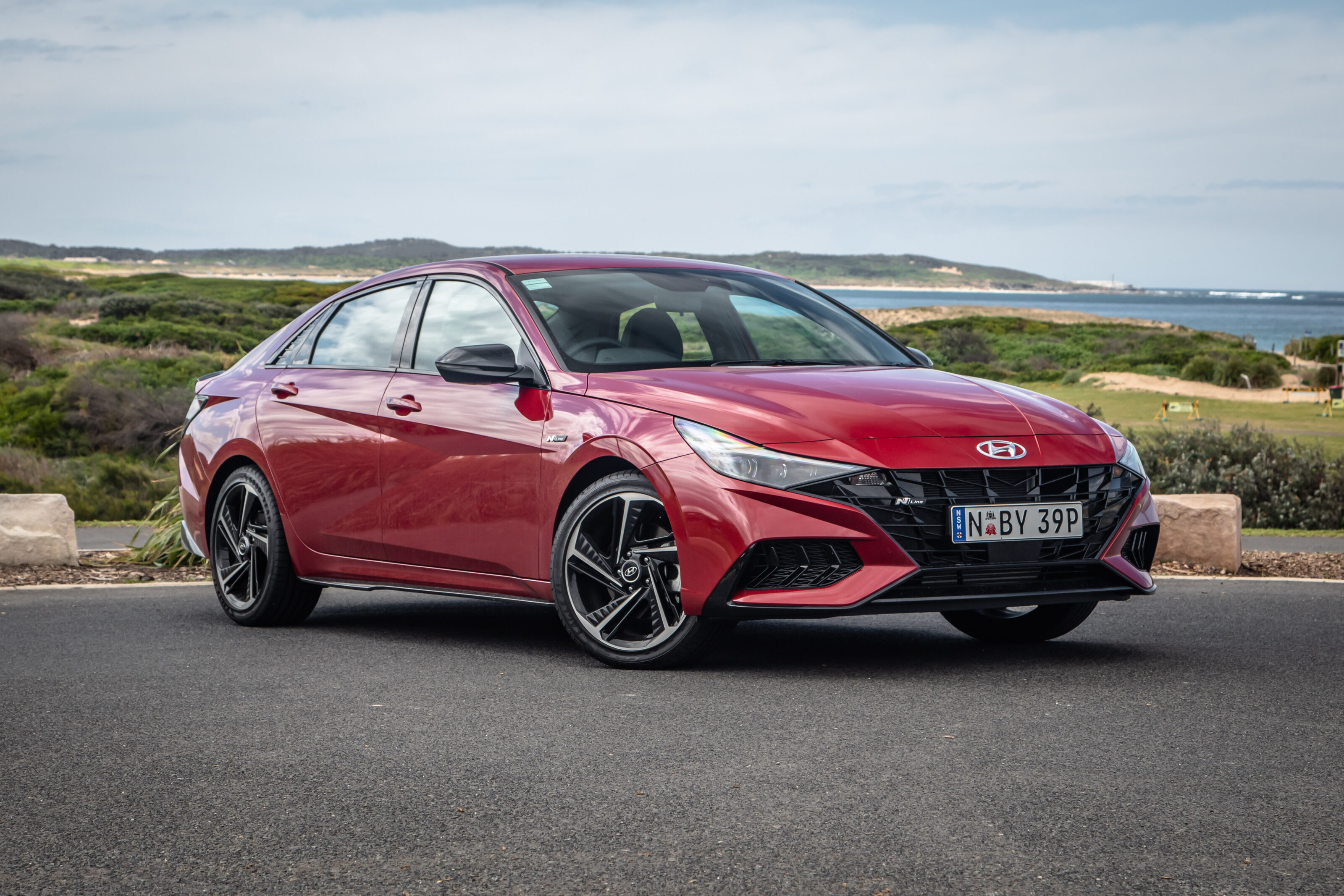
If you’re tossing up between N Line hatch or N Line sedan, I’d say the latter is the more rounded companion. I really do prefer the manual, too, even though it’s a touch slower. While the engine isn’t one for enthusiastic heel-and-toe action or that kind of all-too-rare nonsense, it’s definitely worth the extra involvement to pair with the chassis. I’m less enamoured with the seven-speed dual-clutch, in other words, and hope Hyundai’s excellent eight-speed replaces it soon.
The real test, of course, is against its Korean rival and relative, the Cerato GT. That’s a harder-riding machine with a similar mechanical package and similar cabin space but a slightly more conservative look, higher price and no manual option. If you’re not fussed about the extra warranty, the i30 N Line sedan is the pick.
2021 Hyundai i30 Sedan N Line specifications
Score breakdown
Things we like
- Fantastic looks
- Fun chassis
- Sharp price
Not so much
- 1.6-litre a bit dowdy
- Tyres scrabble
- Axle tramp

